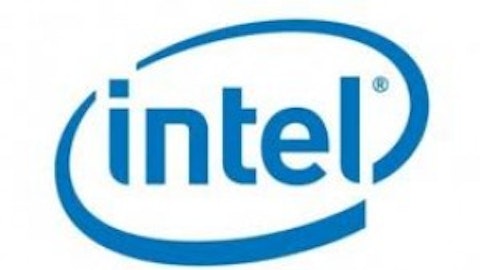I started investing in the ga-ga days of the late ’90s. You could throw a dart at the market page of the newspaper and hit a winner — and a lot of investors did.
Then the Internet bubble burst, and I learned a little bit about the difference between speculating and investing. But the past five years have been unlike anything we’ve seen in my lifetime. The financial world almost collapsed, housing dropped, and the stock market went on a rollercoaster ride that made many investors sick of the market altogether.
Through it all, I’ve stayed invested, and I’ve emerged better off than I was five years ago in many ways. Here are a few of the lessons I learned from the 2007 peak to the most recent highs of the Dow Jones Industrial Average.

A lot of people made a lot of money betting against the housing market and banking sector when the Great Recession hit. John Paulson and David Einhorn became household names by being bearish at exactly the right time.
I won’t advocate trying to time the market, and we don’t have the ability to make the same bets hedge funds did during the crisis, but we can learn something from their bearishness. It isn’t bad to have a few short positions thrown into your portfolio at any given time. You don’t need to be a market bear to short a stock. Do the same research you would normally do and find companies that are overvalued and that you think will go down in value. A market panic usually hits fundamentally weak companies first, so a recession can be your friend when it comes to these short bets.
I was recently short Sony Corporation (ADR) (NYSE:SNE) because I thought it was a dying consumer-electronics company with a terrible business model. Sony Corporation (ADR) (NYSE:SNE) has made bets on the PC, console gaming, and TVs at exactly the wrong time and no longer makes compelling products that brought it consumer electronics fame (remember the Walkman?). This had the company posting massive losses as sales dropped. It so happened that the market went up while I was short the stock, but the stock went down — a profitable trade for me.
I’m currently short Amazon.com, Inc. (NASDAQ:AMZN) , an opinion contrary to that of many Fools. But if we go into another recession, Amazon will be hurt more than most companies, so it’s a bit of a hedge for me. It’s already unprofitable, and if sales growth slows or, heaven forbid, falls, the stock will tumble. In a good economy, I think it’s overvalued. But in a bad economy, I think it would fall hard and offset other potential losses in my portfolio.
In 2008 and 2009 I didn’t have any short positions, but I wish I had. Next time a crash rolls around, I’ll be more prepared.
Trust your instincts
There are a lot of pundits and money managers trying to get investors to think one way or another. Even when the market hit bottom they said there was further to fall — something many are even echoing today. But if you do fundamental analysis and trust your instincts to buy stocks when they’re cheap, you can make money — especially in irrational markets.
I bought shares of Apple in early 2009 because my analysis and my instincts told me the stock was a steal. A P/E ratio near 10, growth near 50%, and the hottest consumer products in the world? If Apple wasn’t going to be profitable in the long term, we were all in trouble.

AAPL P/E Ratio TTM data by YCharts.
Today, I’m putting that strategy to work in solar. I’ve done my analysis, I think the solar market will be huge and I think SunPower Corporation (NASDAQ:SPWR) will be the biggest winner on the market. The company makes a high-quality product with industry-leading efficiency, and as system costs come down, SunPower’s more efficient panels will be attractive to buyers. My instincts have been right in 2013, and we’ll see if they continue to be right for the next few years.
There tends to be a lot of noise when stocks fall, so I learned to stick to the fundamentals and trust my instincts when the market is going crazy.
When everyone is freaking out, get aggressive
We often mention the Buffett-ism “Be greedy when others are fearful,” but it’s harder than most people think. I’ve learned that this is one quality I can leverage to make money in down markets.
Before working at The Motley Fool I helped a friend open a brokerage account and pick stocks. The problem was that he started his account at the peak and experienced the market at its worst early in his own investing tenure.
In early 2009, I was wildly bullish on Las Vegas Sands Corp. (NYSE:LVS) , even as many thought the company would go bankrupt. Majority owner and CEO Sheldon Adelson had already put about $1 billion into the company in 2008, and in a conference call when he was pressed about liquidity, he said (joking about his height):
One of my closest friends says, “Sheldon, don’t worry about hour height. You’re the tallest person I know when you stand on your wallet.” And I’m saying right now the company will not have liquidity problems.
I had already bought shares on the way down from its peak, and (as luck would have it) just a few days before the market hit bottom, I doubled down again. My thought was that if Sheldon Adelson’s company went under, we were all screwed — I might as well be ultra-agressive while everyone is freaking out.
I told my friend I was buying and advised him that some of the cash he had sitting in his account would be put to good use in Las Vegas Sands Corp. (NYSE:LVS). But the fear of widespread layoffs and an economy that continued to tank was too much to overcome.
Markets like certainty, which is why stocks fell as far as they did in 2008 and early 2009. It wasn’t until the summer of 2009 that anyone could see unemployment or the economy turning around, but those who bought when uncertainty was highest made a killing.
We’ll go through this again
The next recession or financial crisis may not be as bad as the last one, but we should always be prepared for a bear market when it arrives. History tells us that every seven to 10 years the market will tank. Hopefully these three lessons will make the next crash more profitable than the last one.
The article From Peak to Peak: What I’ve Learned About Investing in the Last 5 Years originally appeared on Fool.com and is written by Travis Hoium.
Fool contributor Travis Hoium manages an account that owns shares of SunPower. Travis Hoium personally owns shares of SunPower and is short shares of Amazon.com. Travis Hoium has the following options: Long Jan 2015 $7 Calls on SunPower, Long Jan 2015 $5 Calls on SunPower, and Long Jan 2015 $15 Calls on SunPower. The Motley Fool recommends Amazon.com. The Motley Fool owns shares of Amazon.com.
Copyright © 1995 – 2013 The Motley Fool, LLC. All rights reserved. The Motley Fool has a disclosure policy.




